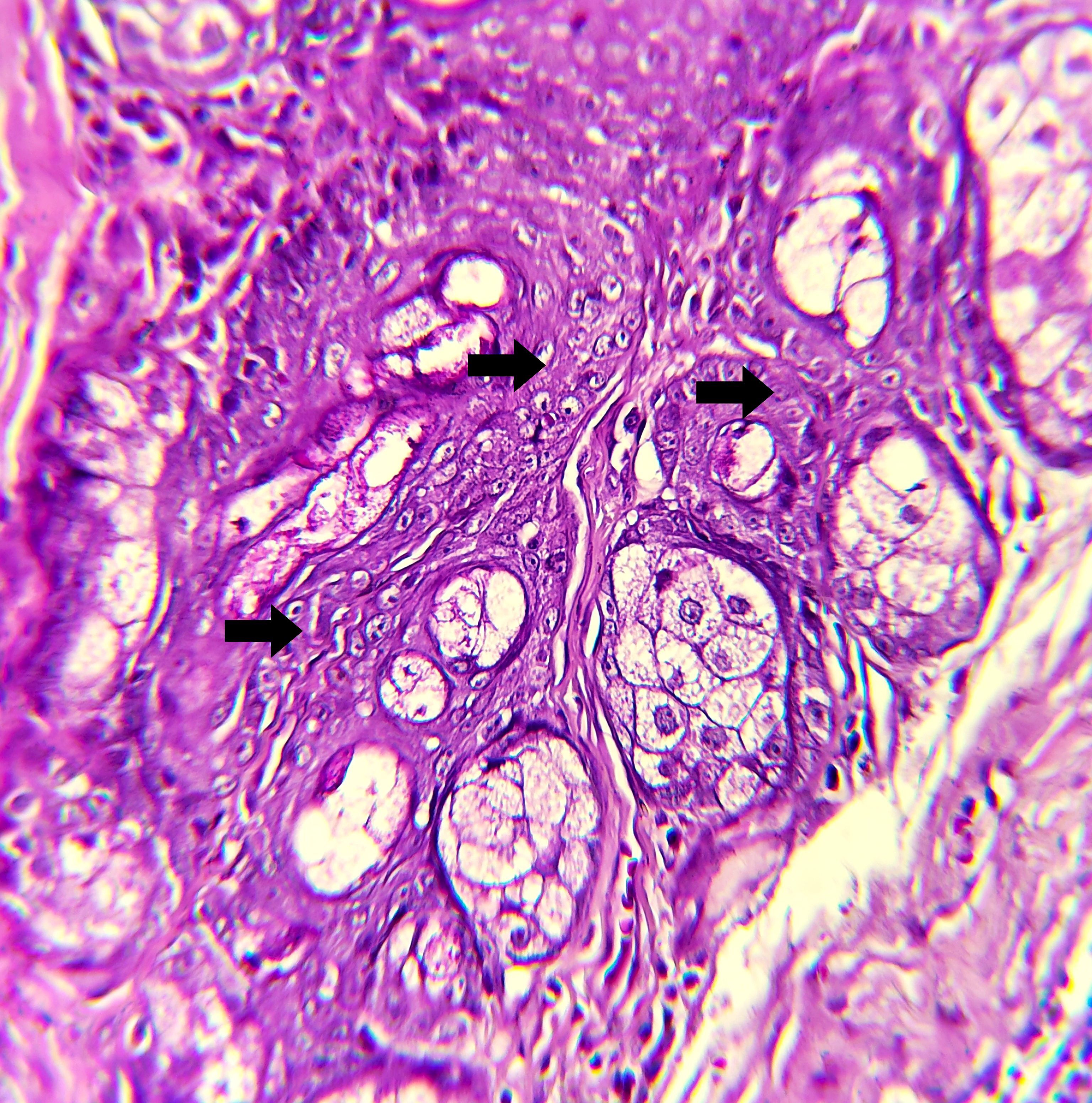Benign sebaceous gland tumor in a giant otter (Pteronura brasiliensis)
DOI:
https://doi.org/10.24070/bjvp.1983-0246.018010Keywords:
Brazilian otter, Mustelidae, zoological animal, neoplasia, neoplasmAbstract
The giant otter (Pteronura brasiliensis) is the largest species in the Mustelidae family currently found on the Amazon, Cerrado, and Pantanal biomes, characterized by its semi-aquatic lifestyle. Globally classified as endangered, the species faces multiple anthropogenic threats, including illegal hunting, habitat destruction, human-wildlife conflicts, hydroelectric dam construction, pollution, and increased tourism activities that disturb its natural behavior and environment. This case report describes a sebaceous gland tumor in a giant otter housed in a zoological park in São Paulo state, Brazil. The animal exhibited discomfort and difficulty eating due to a neoformation in the labial commissure. Following a veterinary examination, the mass was surgically removed, and the otter recovered successfully, returning to its enclosure without complications. Histopathological analysis confirmed a benign sebaceous gland tumor, representing the first documented case in this species under human care. Further research on neoplasms in wild animals is essential to understanding cancer development, prevalence, and implications for conservation and veterinary medicine.


